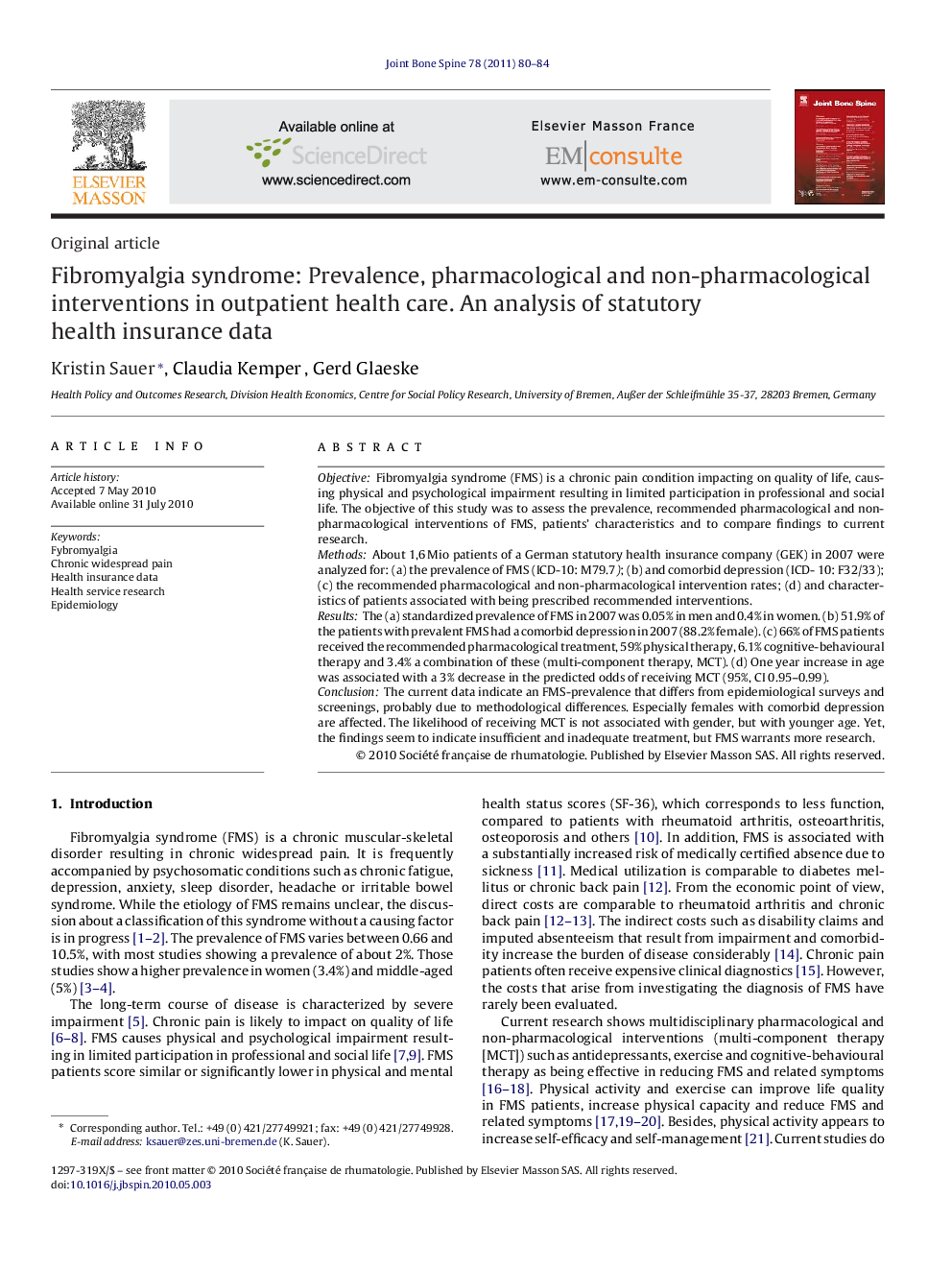| Article ID | Journal | Published Year | Pages | File Type |
|---|---|---|---|---|
| 3366566 | Joint Bone Spine | 2011 | 5 Pages |
ObjectiveFibromyalgia syndrome (FMS) is a chronic pain condition impacting on quality of life, causing physical and psychological impairment resulting in limited participation in professional and social life. The objective of this study was to assess the prevalence, recommended pharmacological and non-pharmacological interventions of FMS, patients’ characteristics and to compare findings to current research.MethodsAbout 1,6 Mio patients of a German statutory health insurance company (GEK) in 2007 were analyzed for: (a) the prevalence of FMS (ICD-10: M79.7); (b) and comorbid depression (ICD- 10: F32/33); (c) the recommended pharmacological and non-pharmacological intervention rates; (d) and characteristics of patients associated with being prescribed recommended interventions.ResultsThe (a) standardized prevalence of FMS in 2007 was 0.05% in men and 0.4% in women. (b) 51.9% of the patients with prevalent FMS had a comorbid depression in 2007 (88.2% female). (c) 66% of FMS patients received the recommended pharmacological treatment, 59% physical therapy, 6.1% cognitive-behavioural therapy and 3.4% a combination of these (multi-component therapy, MCT). (d) One year increase in age was associated with a 3% decrease in the predicted odds of receiving MCT (95%, CI 0.95–0.99).ConclusionThe current data indicate an FMS-prevalence that differs from epidemiological surveys and screenings, probably due to methodological differences. Especially females with comorbid depression are affected. The likelihood of receiving MCT is not associated with gender, but with younger age. Yet, the findings seem to indicate insufficient and inadequate treatment, but FMS warrants more research.
